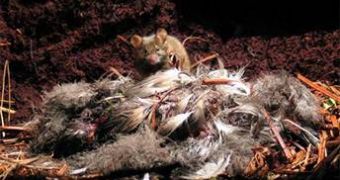Little house mice are not the cute pets they may seem. These ferocious beasts can kill seabirds 300 times their weight on an island in the South Atlantic Ocean. Till now, house mice (Mus musculus) were believed to be harmless to island birds. Now, video footage depicts hoards of tiny house mice as they invade the nests of sea birds and gnaw through their chicks' feathers and skin to reach the entrails.
This is a horror movie put into reality: your albino mouse may be lovely, but its cousins devour so many chicks that the island's bird populations can plummet. Islands are just a portion of the Earth's land area, but they harbor many endemic bird species and since 1600, over 90 % of avian extinctions have taken place among island species, from moa and dodo to parrots. The blame for many disasters has been put on invasive mammals, particularly rats, thus conservation efforts were channeled against these larger rodents.
Instead, mice had been ignored and left to populate islands, many times without competition from their rat relatives, like on Gough Island (South Atlantic), where they are the sole introduced mammals.
During the period between January and September 2004, a team led by Ross Wanless of the University of Cape Town in South Africa monitored 300 Tristan albatross (Diomedea dabbenena) nests, 3 great shearwater (Puffinus gravis) and 60 Atlantic petrel (Pterodroma incerta) chicks. Tristan albatrosses can be 11 kg (25 pounds), as heavy as a swan.
The chicks were examined for wounds three times monthly and filmed employing an infrared video recorder. The video exposed mice gnawing and killing live chicks of all three bird species. In one case, up to 10 mice were feeding from three open wounds on the body of an albatross chick.
"No chicks displayed appropriate behavioral responses to attacks, even though mice had eaten through the body wall of one filmed albatross chick and were consuming the contents of the chick's abdominal cavity," wrote the researchers.
By the end of the research, 100 of the 256 monitored albatross chicks had died. All the chicks were apparently healthy before the attack, thus the mice did not attack weak or sick individuals. At the end of the breeding season, the reproductive success was of just 27 % for the albatross, while normal values are 60-70 %. As for the Atlantic petrel chicks, 40 out of 60 were eaten by mice.
"On islands where house mice are just one part of a network of invasive species, including rats, they pose less of a threat to seabirds compared to larger predators. But on six islands where house mice are the sole invasive mammals, scientists should study the effects of mice on seabird breeding successes," said Wanless.

 14 DAY TRIAL //
14 DAY TRIAL //